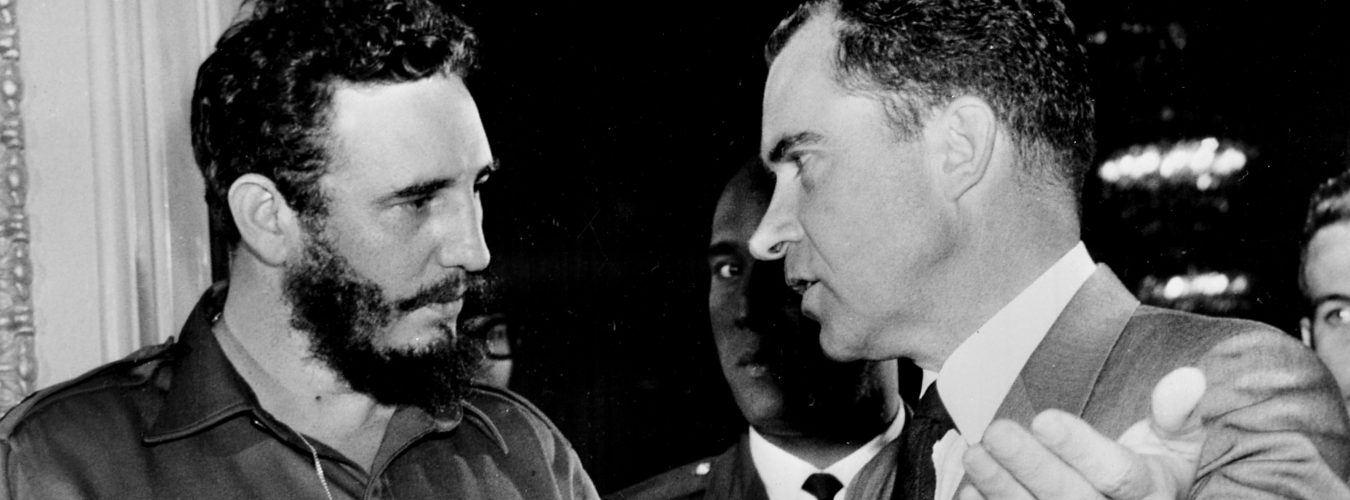Early on the morning of June 5, 1967, the Israeli Air Force launched a preemptive strike against Egypt’s grounded air force and infantry stationed in the Sinai Peninsula, seized the Gaza strip, and began to advance west towards the Suez Canal. Later that day, Jordan’s King Hussein began shelling East Jerusalem, but Israel counterattacked and defeated the Jordanians. Hoping to instigate regime change, Israel sent troops into Syria’s Golan Heights on June 9th, but after the Soviets frantically communicated that they would intervene unless the Israeli advance halted, the Johnson administration pressured Israel into accepting a UN-sanctioned ceasefire. The conflict concluded after just six days on June 10th, with Israel usurping control of the entire Sinai Peninsula and Gaza Strip from Egypt, East Jerusalem and the entire West Bank from Jordan, and the Golan Heights from Syria.
For Israel, the Six Day War was primarily a result of regional hostilities stemming from the Suez Crisis 11 years prior. During the 18 months preceding the Six Day War, the Palestinian Liberation Organizatiom (known as the PLO, which aimed to liberate Palestine through armed struggle and has repeatedly targeted civilians in doing so) launched at least 120 cross border attacks on Israel from Syria and Jordan, killing 11 Israelis. Israel retaliated in November 1966 with an attack on Samu, Jordan, destroying the entire village and killing 14 Jordanians. While the United States quickly stepped in and drove a U.N. resolution condemning Israel’s response, the issue of Palestinian attacks on Israel remained. Tensions were compounded in early 1967, when Syria began shelling northern Israel in solidarity with the PLO, eliciting an American blessing for an Israeli military response.
While regional hostilities played a role facilitating the Six Day War, the larger Cold War competition between the United States and the Soviet Union also influenced the trajectory of the eventual conflict. In 1960, the United States sought to dissuade Egypt from aligning with the Soviets. Egyptian President Nasser’s 1962 request for Soviet mid range bombers, involvement in the Yemeni Civil War, and subsequent bombing of Saudi Arabia caused distrust between the two states, culminating in aerial warfare between Egyptian and U.S. fighter pilots over the Saudi-Yemeni border. President Nasser of Egypt responded by embracing the Kremlin’s call for “wars of national liberation” from Southeast Asia to the Middle East and inviting the Vietcong to establish an embassy in Cairo. Additionally, Hafez al-Assad, leader of a pro-Nasser political party that espoused state socialism and pan-Arabism took power in Syria in February 1966, and was quick to sign an arms deal with the Soviets. With Arabic states beginning to align with the Soviets, and the United States bogged down in Vietnam, the Johnson administration viewed supporting Israel as crucial in offsetting communist influence in the middle east. Moreover, as midterm elections drew nearer in 1966, Johnson was sensitive to the security concerns of Israel, whose allies could help his standing on other diplomatic issues. Therefore, he authorized the sale of tanks and fighter jets to Israel in 1965 and 1966.
When Prime Minister Levi Eshkol of Israel implied his state might seek regime change in Syria, the Kremlin responded by warning Nasser of an imminent Israeli attack on the Golan Heights. Nasser responded by closing the Straits of Tiran to Israeli shipping and moving Egyptian forces into the Sinai, which served as the impetus for the Israeli attack that began the conflict.
The New York Times’ coverage of the Six Day War can be interpreted as supportive of U.S. foreign policy, as it emphasized that Israel’s foes had aligned with the Soviet Union,and that Israel acted primarily out of self defense. In a June 10th article, the Times outlined the Eastern bloc’s response to the outcome of the war, which entailed charging Israel for instigating the conflict and blaming the United States for colluding with “imperialist forces.” In doing so, the article stated that the Eastern bloc’s statement represented a “formal communist bloc interest” in the Middle Eastern conflict, thereby cementing in the American psyche the notion that the conflict was part of the larger Cold War competition and implying that the Soviets were the aggressors. On June 25th, the Times also reported that recovered Egyptian military documents showed that Israel had “beat the Egyptians to the punch by a narrow margin,” and that the Soviets provided advanced fighter jets, as well as trained Egyptian fighter pilots. This article buttressed the idea that the Soviets were instigators in this conflict, and that the American alliance with the Israeli’s was both justified and necessary.
Works Cited
Boissoneault, Lorraine. “What the Six-Day WAR Tells Us about the Cold War,” June 6, 2017.
Middleton, Drew “Israelis Say Captured Documents Show Egyptians Planned To Strike First,” New York TimesJun 25, 1967: 54 (accessed March 24, 2021).
Little, Douglas,. “The Cold War in the Middle East: Suez Crisis to Camp David Accords.” In The Cambridge History of the Cold War, edited by Melvyn P. Leffler and Odd Arne Westad. New York: Cambridge University Press, 2010: 305-26
Soviet Bloc Bids Israel Pull Back: Leaders Meeting In Moscow Threaten ‘Resolute Rebuff’. 1967. New York Times (1923-Current file), Jun 10, 1967. (accessed March 24, 2021).

